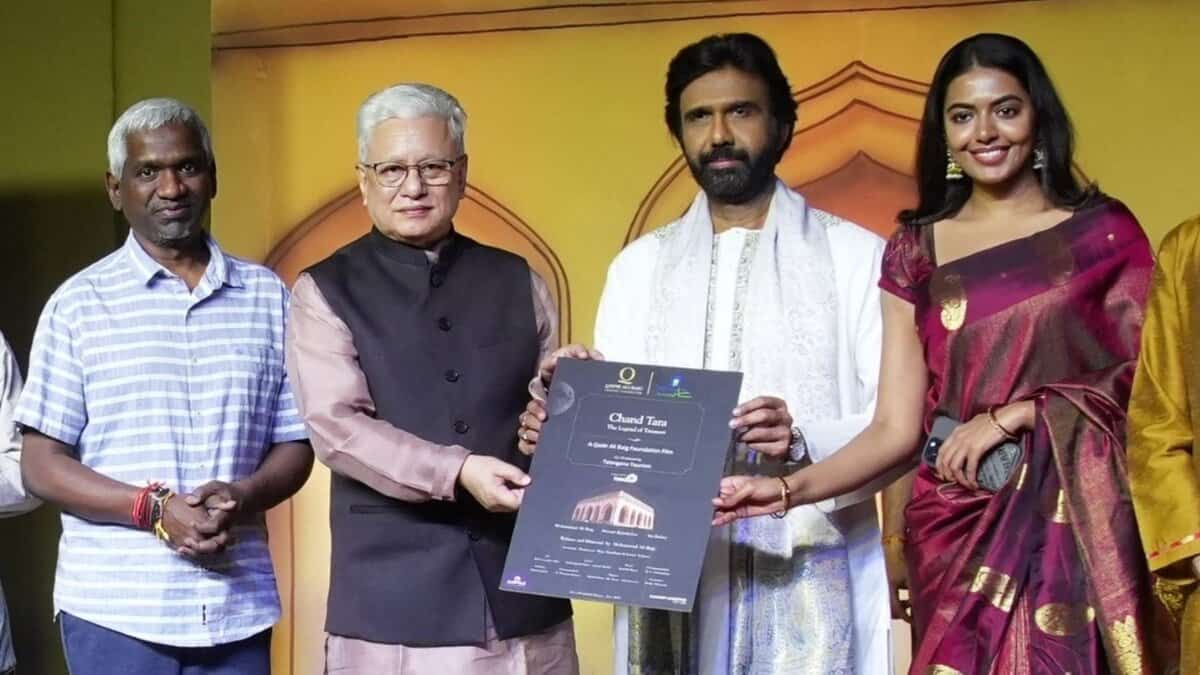Prime Minister Modi, who is on a two-day visit to Japan, invited the Japanese companies to invest in India. Speaking at the India-Japan Joint Economic Forum in Tokyo on Friday (29th August), PM Modi encouraged Japanese companies to “Come make in India, make for the world.”
PM Modi’s visit to the country comes after Japanese PM Shigeru Ishiba invited him to attend the economic forum. Underscoring the historical economic ties between India and Japan, PM Modi said that Japan’s excellence and India’s scale have the potential to create a perfect partnership.
#WATCH | At India-Japan Economic Forum in Tokyo, PM Modi says, “Japan’s excellence and India’s scale can create a perfect partnership…”
(Video source: DD) pic.twitter.com/Js5cjRGHvS
— ANI (@ANI) August 29, 2025
“Together, we can make a significant contribution to the development of the Global South, especially Africa. I urge you – come, make in India, make for the world. The success stories of ‘Suzuki’ and ‘Daikin’ can become your success stories too,” said PM Modi.
He highlighted how India and Japan have partnered across sectors ranging from “Metro (rail) to manufacturing and semiconductors to start-ups”, which underlines the mutual trust between the two countries.
#WATCH | Addressing the India-Japan Economic Forum in Tokyo, PM Modi says, “Japan has always been an important partner in India’s development journey. From metro rail to manufacturing, semiconductors to startups…Japanese companies have invested over $ 40 billion in India…”… pic.twitter.com/8aW5E5BF8E
— ANI (@ANI) August 29, 2025
PM Modi proposed a five-point roadmap to strengthen and elevate the bilateral relations between India and Japan.
1) Manufacturing and New Industry:
PM Modi said that the two countries can replicate their successful partnership in manufacturing and automotive sectors in batteries, robotics, semiconductors, shipbuilding, and nuclear energy. He stressed the significance of this partnership for the development of the Global South, including Africa.
2) Technology and Innovation:
He added that Japan’s “technology powerhouse” and India’s “talent powerhouse” together can establish the two countries as leaders of the tech revolution of the century. He pointed out that India has already started moving in this direction by stepping into AI, quantum computing, semiconductors, biotechnology, and space.
3) Green Energy Transition:
The Prime Minister urged Japan to join India in laying the foundation of a clean and green future through a joint credit mechanism. “India is progressing rapidly toward achieving 500 GW of renewable energy by 2030 and 100 GW of nuclear power by 2047. There are immense opportunities in solar, green hydrogen, and clean energy,” the PM said.
4) Next-Generation Infrastructure:
PM Modi encouraged the two countries to partner in creating next-generation infrastructure. He appreciated how India constructed over 1000 km of metro lines in the last decade and enhanced road and rail connectivity with Japan’s cooperation.
5) Skill Development and People-to-People Ties:
Lastly, PM Modi asserted Japan could benefit from India’s demography. He said that Japan could train India’s talented youth in the local language and make use of their potential to enhance Japanese manpower.
Close cultural and political ties between India and Japan
The ties between India and Japan date back to the 6th century, when Buddhism, which originated in India, made its way into Japan.
When Japan was recovering from WWII, in 1949, India’s then Prime Minister gifted an elephant to the Ueno Zoo in Tokyo, setting the tone for warm and cordial relations between the two countries.
This was followed by a peace treaty signed on 28th April, 1952, between India and Japan to establish diplomatic relations. After WWII, this was one of the first peace treaties signed by Japan.
Fast forward to 2000, Japanese Prime Minister Yoshiro Mori’s visit to India and his meeting with the Indian Prime Minister Atal Bihari Vajpayee set the stage for “Global Partnership between Japan and India”.
Thereafter, following Japanese PM Junichiro Koizumi’s visit to India in 2005, the two countries have been holding regular Annual Summits. With Indian PM Manmohan Singh’s visit to Japan in 2006, the India-Japan relationship was elevated to the “Global and Strategic Partnership”.
In 2014, during his first term as the Prime Minister, PM Modi visited Japan for the Annual Summit meeting with Japanese PM Shinzo Abe. After their meeting, the India-Japan partnership was upgraded to “Special Strategic and Global Partnership.”
Subsequently, PM Shinzo Abe met PM Modi in India, and the two leaders resolved to further deepen, strengthen and expand the bilateral ties between the two countries.
With this aim, they announced “Japan and India Vision 2025 Special Strategic and Global Partnership Working Together for Peace and Prosperity of the Indo-Pacific Region and the World” and laid the groundwork for the new-age India-Japan relations.
PM Modi’s old ties with Japan
Prime Minister Modi’s connection with Japan dates back to 2007, when he made his first official visit to Japan as the Chief Minister of Gujarat. Modi, accompanied by a 40-member delegation, visited the cities of Tokyo, Osaka, Hiroshima and Kobe during a six-day trip.
He met with major Japanese companies, Mitsubishi, Mitsui, Sumitomo, Marubeni, Suzuki, Toshiba, Nippon Steel, Nissan Steel, Unido and Tsuneshi Shipbuilding.
MoUs were signed between the Japan External Trade Organisation (JETRO) and Gujarat’s Industries Department, encompassing areas like ports, logistics, infrastructure and human resource development.
During the visit, Modi also had a meeting with PM Abe, with whom PM Modi went on to share close personal ties.
The depth of their relationship could be inferred from the fact that PM Modi was the first foreign politician to be invited by PM Shinzo Abe to his holiday home in Narsawa village in October 2018.
Welcoming Modi to his holiday home, Abe said that Modi was “one of my most dependable and valuable friends”.
The India-Japan relations have stood the test of time and have been on a path to progress.
Recently, the previous Prime Minister of Japan, PM Kishida, launched the Clean Energy Partnership, extended the Industrial Competitiveness Partnership with India and pledged $42 billion investment in India in 2022.
India-Japan economic ties
India and Japan have developed robust economic ties over the years, which have expanded and flourished with time. In 2021, Japan was the 13th largest trading partner of India.
In the same year, the number of private companies having branches in India stood at 1439. In 2023-24, bilateral trade between India and Japan reached $22.8 billion.
India’s exports to Japan include chemicals, vehicles, aluminium, and seafood; imports include machinery, steel, copper, and reactors. With $43.2 billion cumulative investment till December 2024, Japan became India’s 5th largest investor.
Japan has ranked India as its most promising long-term investment destination. Around 5000 Japanese establishments operate in India, and over 100 Indian companies have a presence in Japan.
The two Asian powers are looking to expand their cooperation in the digital sector, clean energy, supply chain resilience, industrial competitiveness, and skill development.
The two countries are expected to launch a security initiative centred on semiconductors, critical minerals, AI, telecommunications and clean energy.
Japanese public and private investments in India, which have achieved the set target of 5 trillion yen, are likely to be upscaled to 7-10 trillion yen.
Since 1958, Japan has been the largest Official Development Assistance (ODA) donor to India. Through ODA, the country has been supporting critical infrastructure and human development projects in India.
In 2023-24, Japan’s ODA to India amounted to $4.5 billion. Delhi Metro is an example of the successful utilisation of the Japanese ODA.
Japan is also partnering with India in building a High-Speed Railway in India by introducing Japan’s Shinkansen System, a flagship project of Japan-India relations.
India-Japan defence cooperation
In 2008, during PM Manmohan Singh’s visit to Japan, the two countries issued “the Joint Declaration on Security Cooperation between Japan and India”.
The defence cooperation between the two countries encompasses several frameworks of security and defence dialogue, including the Foreign and Defence Ministerial Meeting (“2+2” meeting), Annual Defence Ministerial Dialogue and Coast Guard-to-Coast Guard dialogue.
In 2020, the Indian and Japanese governments signed an agreement called the Reciprocal Provision of Supplies and Services Agreement (also called Acquisition and Cross-Servicing Agreement), concerning the reciprocal provision of supplies and services between the Japanese Self-Defence Forces and the Indian Armed Forces.
The agreement came into force on July 11, 2021. Some other key defence agreements between the two countries are the Defence Cooperation and Exchanges MoU (2014), and the Information Protection Agreement (2015).
India and Japan take part in various regular joint military exercises, including Malabar (with the US and Australia), Milan (multilateral naval), JIMEX (bilateral maritime), Dharma Guardian (Army), and Coast Guard cooperation.
Regional cooperation between both countries
At the global level, India and Japan have been cooperating through multilateral platforms like the Quad, the International Solar Alliance (ISA), the Coalition for Disaster Resilient Infrastructure (CDRI), and the Supply Chain Resilience Initiative (SCRI).
Through Quad, India and Japan have been working towards their commitment to a free, open, and inclusive Indo-Pacific and to counter the Chinese influence in the region.
India-Japan ties in the context of recent US tariffs
PM Modi’s visit to Japan comes two days after the US doubled its punitive tariffs on India, undermining the trade relations between the two countries. The Trump administration doubled tariffs on India, from 25% to 50% for buying Russian oil.
Japan is also facing punitive tariffs from the US.
Notably, Japan’s trade negotiator Ryosei Akazawa cancelled a visit to the US a day before PM Modi’s visit to Japan. The visit was intended to formalise a $550 billion investment package offered by Japan to the US to ease punitive US tariffs.
Amid the trade uncertainties faced by the two countries because of the US tariffs, India and Japan are working towards strengthening and enhancing their economic cooperation. A stronger India-Japan cooperation will significantly contribute to regional as well as individual stability.

















































